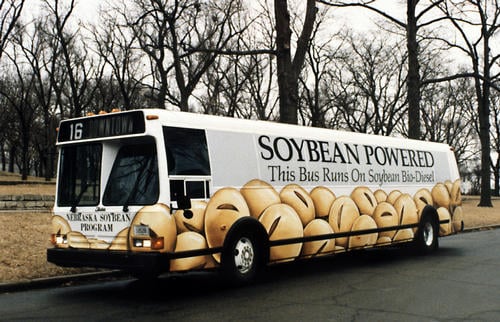Can bus rapid transit in Fresno in California’s mid-section deliver quality?, Will it be quicker?, are two key questions to ask of the city’s latest transit offering.
Even before the “Q” (how the new BRT is branded) was a sure thing, being contemplated was what the enhanced transit bus service would be able to bring.
“What BRT in Fresno will purportedly do is speed up overall travel time on account of quicker boardings and alightings, traffic signal prioritization, fare pre-payment boarding, fewer stops (stops at half-mile intervals as opposed to the current quarter-mile intervals) plus other time-savings attributes that could either be built in or added at some future point,” this from the “Fresno, California BRT vs. LRT: Decisions, decisions, decisions” Air Quality Matters blog post. That was back on Oct. 24, 2013.
Well, it’s now been more than four years since that summation was published. Being the Fresno BRT service has just recently opened, here are some “Q” specifics.
Fresno’s Q is now open for business. The “Q” is the mid-state’s bus rapid transit service or BRT and it is, at last, up and running. It was hoped that the service would be ready by November 2017, but it wasn’t quite good-to-go at that time.
The “Q” designation, if I recall, is for “quick” and “quality.” “Quiet” could very well have been included too.
The line in operation now covers a distance of 15.7 miles one way connecting Clovis Ave. in the southeast to N. Fresno St., in north-central Fresno, effectively at the location of the sprawling River Park shopping complex. From N. Fresno St. it is a short jog west on Nees Ave. to Blackstone Ave. where the route veers south maintaining a north-south alignment all the way to Ventura Ave. Here the route then heads east and using a combination of both Ventura Ave. and Kings Canyon Rd. the service is then on an east-west trajectory taking it to Clovis Ave. The upgraded service cost between $30 million and $50 million (Disclosure: I do not know the exact amount), the federal government contributing the majority of the funds.

According to other information also on the same page, there are “48 one-way stations,” a total of “51 station pairs” in all, “two terminal stations” and at “one transit center … a shared platform station.”

Meanwhile, in “Performance Enhancement – Part 3: Transit buses to the rescue?” a Mar. 14, 2013 Air Quality Matters post, Ottawa, Canada’s bus rapid transit system was discussed.
As it has to do with that, what was written was: “The Ottawa, Canada bus rapid transit system, a BRT so successful that light rail transit is being installed in its place. Yonah Freemark, at The Transport Politic blog in ‘Ottawa, Closer than Ever to Replacing Bus Rapid Transit with Light Rail,’ provides comment.
“Freemark contemplates: ‘With expenses like that — practically equivalent to building a new rail line from scratch — one wonders whether there was ever any fiscal advantage to using buses first along the rapidway. Did the city lose out by not choosing rail when the transitway first opened in 1983?’
“Freemark raises this concern because, as he explains, ‘The transitway has so many riders that it puts 2,600 daily buses onto two downtown streets, and by 2018, the system will have literally no more capacity. By 2030, Ottawa would have to get a bus downtown every eighteen seconds to accommodate all of its riders — an impossible feat.’
“To me, this sounds like a good problem to have, what with the buses in Canada’s capital city enjoying a transit share of 23 percent with its 240,000 daily riders and all.
“The success of BRT in Ottawa is unprecedented.”
What made the Ottawa BRT the resounding success that it was, will there be a repeat in Fresno, the Q experiencing the same kind of “unprecedented” success to ultimately be replaced by light rail transit?
There is always hope.
Notes
Route information on the Q has since been revised.
This post was last revised on May 11, 2020 @ 7:05 a.m. Pacific Daylight Time.
– Alan Kandel

